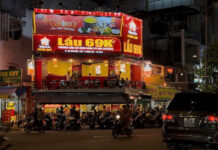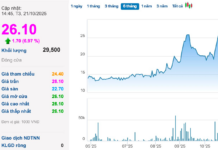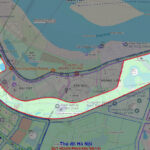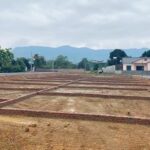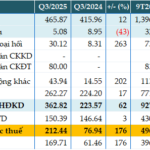The Hanoi People’s Committee has issued Decision No. 61, which outlines important regulations regarding land management and usage within the city.
One notable aspect of this decision is the conditions and minimum area requirements for land division and consolidation.
Regarding residential land division, in wards and townships, the area outside transportation routes, technical infrastructure, and public spaces must not be smaller than 50 square meters after division, with a length of over 4 meters and a width adjacent to the transportation route of 4 meters or more.
For plain rural communes, the minimum area after division is 80 square meters, 100 square meters for midland communes, and 150 square meters for mountainous communes.
In the case of non-agricultural land, the regulations apply to plots not intended for state allocation or leasing for project implementation. In wards and townships, commercial and service land must have a width adjacent to the transportation route of 10 meters or more and a minimum area of 400 square meters. For other types of non-agricultural land, the plot must have a width of over 20 meters and a minimum area of 1,000 square meters.
In communes, commercial and service land must have an area of no less than 800 square meters, and other non-agricultural land must be no less than 2,000 square meters.

A land auction site in Hoai Duc District, Hanoi. Photo: Hong Khanh |
For agricultural land, the minimum area for land growing annual crops is 300 square meters in wards and townships and 500 square meters in communes. Land for growing perennial crops and land for aquaculture must be 500 square meters in wards and townships and 1,000 square meters in communes. Forest land can be divided if the area is no less than 5,000 square meters.
Currently, land division in Hanoi is governed by Decision No. 20 of 2017, which stipulates that the land plot resulting from the division must have a minimum area of 30 square meters in wards and townships and not less than 50% of the new minimum land allocation limit in other areas.
Previously, during the draft consultation phase, the Department of Natural Resources and Environment stated that, in addition to adhering to criteria on area, technical infrastructure, land division should also carefully consider urban planning and living space.
Moreover, land division needs to ensure that it does not strain the technical and social infrastructure, preventing overload and maintaining the quality of life in residential areas. In the long run, sustainable development factors must be considered, avoiding disruptions to the city’s master plan and maintaining a balance in technical and social infrastructure, as well as preserving the cultural and historical values of the capital.
Hong Khanh
The Ultimate Green Oasis: Unveiling Plans for a Massive Park in Bắc Từ Liêm District, Hanoi
The planned ‘mega’ park and nursery in Hanoi’s Thuong Cat and Lien Mac wards, Bac Tu Liem district, will be a welcome addition to the area, offering a peaceful green space for residents to enjoy. With the upcoming construction of the Thuong Cat Bridge, the new park will provide a tranquil escape for the community, enhancing the appeal of this already thriving neighborhood.
The New Subdivision Regulations in Hanoi: Minimum Lot Size of 50 sq.m
As of October 7, 2024, the minimum land area required for a plot division in Hanoi has been revised to 50 square meters, reflecting a significant increase of 20 square meters from the previous regulation.
Unveiling Hanoi’s Mystery: The Story of an Anomalous Land Auction and the Ghost Bidder
The Hanoi People’s Committee has requested that the city’s police force employ operational measures to promptly detect violations in land auctions. They have also proposed solutions to prevent or restrict the participation of bidders who consistently place abnormally high bids and subsequently forfeit their deposits.




